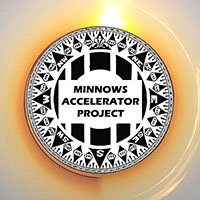Brainsteem Mathematics Challenges: 7OKENs
It has been a very long time since the last Brainsteem mathematical puzzle, but I feel it is time to reboot this feature!
As always, these are designed to be done by hand; problems in computational mathematics will be posted under the "Brainsteem Compute" title.

A new crypto, 7OKEN, has 1,000,000 tokens to distribute at their first ICO. The tokens will be issued randomly with probabilities commensurate with the number of tickets sold. The 7OKENs are distributed under the following rules: an individual shall only receive tokens that equal a power of 7, that is, 1, 7, 49, 343, and so on; no individual shall receive more than one set of tokens; and no more than 5 individuals shall receive the same number of tokens.
In how many ways can the tokens be distributed and how many people will receive at least 1 token?
Upvotes will be given for interesting answers and solutions.
More Brainsteems coming soon!
 - - -
- - -  - -
- -Please Comment, Resteem and Upvote. Thanks!
@rycharde manages the AAKOM project and the MAP forum.
Good to see that you've still got more math puzzles for us Steemians to solve. I think I've got a solution here...
Start with a maximum distribution (all 1M tokens distributed):
If all 1M tokens must be distributed, then this would be the only way to do it, and 16 people would get at least one token. Things get interesting if the ICO doesn't have to sell out.
Say that no one receives the level 7 bonanza of 823543 tokens. Then the maximum number of tokens that can be distributed is 137257 x 5 = 686285, if the maximum 5 people for each remaining level receives tokens. That means anywhere from 1-35 people could receive tokens as a result of this ICO (I'll assume that if zero people get tokens then this counts as a scam and not an ICO). This also means that any combination involving 0-5 people receiving tokens per level counts. (6 possibilities per level)(7 levels) = 279,936 ways to distribute tokens if no one gets the bonanza, -1 for the scam scenario. [But we'll add +1 back from the max distribution case.]
Now say there's a bonanza winner but no level 6 winner. In this case, any combination of 0-5 people receiving tokens per level (from 0-5) counts as a possible distribution. In this specific situation there are 66 = 46,656 additional ways to distribute tokens.
We can continue working our way down the levels in this fashion, each time assuming that the levels above the one currently being analyzed all have the maximum possible token recipients and tokens distributed. If at the current level, there is at least one fewer token recipient than the maximum possible, then any combination of 0-5 people at all levels below can receive tokens. So for level 5, there's 3 x 65 = 23,328 additional ways to distribute tokens (7776 each for 0, 1, or 2 level 5 winners).
The total number of ways to distribute tokens then, assuming a sellout is not required, is calculated as:
67+66+3(65)+3(64)+3(63)+3(62)+61+1+1-1 = 354,571
The "+1+1-1" at the end is based on these factors:
That is a very thorough solution! And you're right, I should have added that all million tokens had to be distributed.
The key to doing it by hand is to convert 1 million into base 7 (which might take 5 minutes to do), then the solution falls out naturally.
This post has received gratitude of 5.01 % from @appreciator thanks to: @rycharde.
You got a 2.49% upvote from @postpromoter courtesy of @rycharde!
Want to promote your posts too? Check out the Steem Bot Tracker website for more info. If you would like to support the development of @postpromoter and the bot tracker please vote for @yabapmatt for witness!
Thanks to @doughtaker. Because that was making my head hurt.
Thanks @rycharde